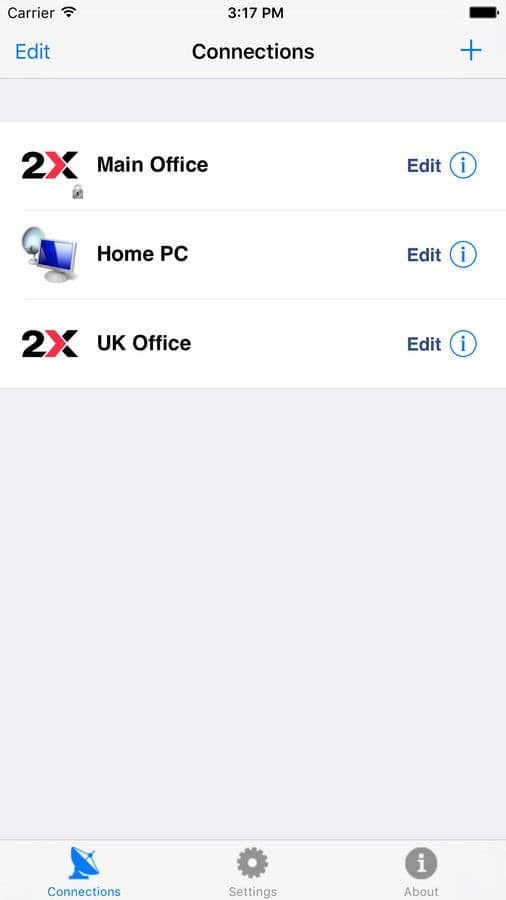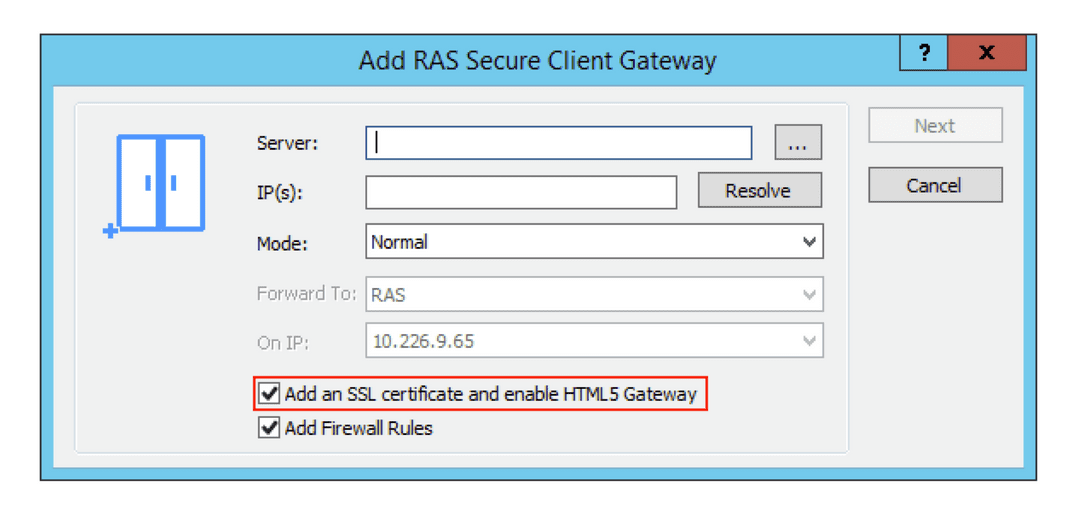
Click OK to create a connection and connect to Parallels RAS.For more information, please see Configuring a RAS Connection or Configuring an RDP Connection. The Advanced settings link opens the Connection Properties dialog where you can specify additional connection properties.


Parallels Client connects to the RAS Secure Gateway and the session connection is tunneled through the first available connection. Same as the direct mode above, but uses encryption to secure the data. This is best used when the Parallels Client and the terminal server reside on the same network. Parallels Client first connects to the RAS Secure Gateway for the best available terminal server and then connects directly to that server. Select one of the following options (note that you should use the mode that your system administrator has asked you to use): The Connection mode drop-down list is enabled only when creating a Parallels RAS connection.If you are creating a Parallels RAS connection, this field will be auto-populated. If creating a Standard RDP connection, specify the remote computer IP address or hostname in the Server field.Its the fastest, simplest, and most reliable way to use virtualized. When creating a Standard RDP connection, you need to know the IP address or hostname of the remote computer you want to connect to. Parallels Client, when connected to the Parallels RAS, provides secure access to business applications, virtual desktops, and data. To manually configure the RAS Connection, use the following settings: The information will look similar to the following: If you received an invitation email from your administrator, you can find this information at the bottom of the message. When creating a Parallels RAS connection, your system administrator should give you the connection information that must be specified in this dialog. On the next dialog, specify connection properties:.If you want to create an RDP connection, click the Create RDP Connection instead button.Contact your system administrator to make sure that this option is enabled. Note: Connection discovery by email needs to be configured by system administrators. If you want to create a Parallels RAS connection, enter the Parallels RAS IP address, its hostname (this should be the server where the RAS Secure Gateway resides), or your work email address.In the main Parallels Client window, click the File > New Connection menu item.Open Parallels Client by clicking Start > All Apps > Parallels > Parallels Client (or double-click the Parallels Client icon on your desktop). Parallels Client first connects to the RAS Secure Client Gateway for the best available terminal server and then connects directly to that server.
PARALLELS CLIENT WINDOWS
You can open entire desktops or single applications in their native UIs, with customizable shortcuts available for sending commands that may not be available on macOS, such as the Win key.Parallels Client for Windows allows you to have more than one connection, so you could easily connect to different servers or using different connection properties, etc. class .ParallelSSHClient(hosts, userNone, passwordNone, port22, pkeyNone, numretries3, timeoutNone, poolsize100, allowagentTrue, hostconfigNone, retrydelay5, proxyhostNone, proxy.

The user interface features a simple layout, with connections listed in the sidebar and additional details on the right. API documentation for the ssh2-python ( libssh2) based parallel client. The application also offers support for graphic acceleration via RemoteFX for improved quality and compatibility. Remote sound, two-way clipboard, and file sharing ate all available. It is installed on any computer that needs to connect to a remote desktop or application, providing quick and easy access to resources with minimal hassle, as configuration can be centralized and an autoconfiguration link can get users going instantly.ĭepending on your needs, Parallels Client can be used to access virtual desktops, terminal servers, remote desktop hosts, and even Windows PCs. Parallels Client is the desktop application that connects to a remote application server. In today’s work from home world, it’s a viable solution that ensures data security while interfacing with employees from any location. Parallels’ Remote Application Server (RAS) was designed for companies who need to provide employees with remote access to computers and applications, while allowing centralized control over the entire infrastructure.


 0 kommentar(er)
0 kommentar(er)
